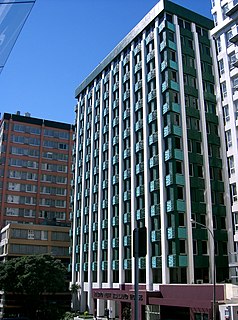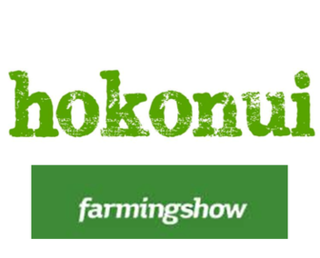
Radio New Zealand, commonly known as Radio NZ or simply RNZ, is a New Zealand public-service radio broadcaster and Crown entity that was established under the Radio New Zealand Act 1995. It operates news and current-affairs network, RNZ National, and a classical-music and jazz network, RNZ Concert, with full government funding from NZ on Air. Since 2014, the organisation's focus has been to transform RNZ from a radio broadcaster to a multimedia outlet, increasing its production of digital content in audio, video, and written forms.
Radio broadcasting began in New Zealand in 1922, and is now dominated by almost thirty radio networks and station groups. The Government has dominated broadcasting since 1925, but through privatisation and deregulation has allowed commercial talk and music stations to reach large audiences. New Zealand also has several radio stations serving Māori tribes, Pacific Island communities, ethnic minorities, evangelical Christians and special interests.
More FM is a New Zealand radio network that plays hot adult contemporary music. It is operated by MediaWorks New Zealand.

Newstalk ZB is a nationwide New Zealand talk-radio network operated by NZME Radio. It is available in almost every radio market area in New Zealand, and has news reporters based in many of them. In addition to talkback, the network also broadcasts news, interviews, music, and sports. The network's hosts include Mike Hosking, Kerre Woodham, Marcus Lush, Jack Tame, Simon Barnett, James Daniels and Heather du Plessis-Allan. Wellington and Christchurch have a local morning show.
The Breeze is a New Zealand radio station playing an adult contemporary music format owned by MediaWorks New Zealand, playing a variety of music from the 70s, 80s, 90s and also current hits. The Breeze network broadcasts to 21 markets throughout New Zealand, with each station presenting a mixture of local and network programming.

Mix was a greatest hits radio station in New Zealand, broadcasting music from the 70s, 80s and 90s. Mix was owned and operated by New Zealand Media and Entertainment. Mix is targeted at 35 to 54-year-olds. Its head office and studios were located in central Auckland, alongside New Zealand Media and Entertainment's seven other radio networks. In September 2020, Mix was replaced with Gold.

ZM is a New Zealand contemporary hit radio network owned by New Zealand Media and Entertainment. It broadcasts 19 markets throughout mainland New Zealand via terrestrial FM, and worldwide via the Internet. The network targets the 15–39 demographic specialises in a chart-music playlist of pop, rock, hip hop and dance music. It reaches approximately 486,800 listeners weekly, making it the fifth largest commercial radio station in New Zealand.

Coast is a New Zealand radio network playing a mix of "feel good" hits from the 1970s, 1980s and more recent years. The network includes stations in 25 major cities and provincial centres broadcasting from studios in central Auckland, owned and operated by New Zealand Media and Entertainment (NZME).

The Hits is a Hot adult contemporary music radio network, broadcasting to 26 markets across New Zealand. It was set up by Government broadcaster Radio New Zealand in 1993 by consolidating existing stations into a single brand and has been privately owned since 1996. The Hits has had the broadest broadcast reach of any radio network in the country since 1996, and is now available on 40 full-power FM frequencies and 18 iHeartRadio streams.

Hokonui is an Adult Contemporary radio station that first launched in Gore, New Zealand, broadcasting across Southland and now also broadcasts across South Otago and Mid Canterbury. Hokonui also from April 2015 was broadcasting in Taranaki until late in 2020 when it was disestablished by NZME and replaced by Gold AM. The name Hokonui comes from the Hokonui Hills which can clearly be seen in Gore and the Southland Plains.
Classic Rock 96FM was a radio station in Hawke's Bay, New Zealand that broadcast several different formats and eventually became part of the ZM network, operated by New Zealand Media and Entertainment from 1977 to 1988.
2ZB was a radio station based in Wellington, New Zealand. This station was run by Radio New Zealand and eventually spawned a second FM station called B90FM. Today 2ZB and B90FM are part of a nationwide networks Newstalk ZB and The Hits respectively.
4ZB was an adult contemporary radio station in Dunedin, New Zealand.
95 BOP FM was a radio station in Tauranga, New Zealand.
Geyserland FM was a radio station in Rotorua, New Zealand.
3ZB was a radio station based in Christchurch, New Zealand. This station was run by Radio New Zealand and eventually spawned a second FM station called B98FM. Today 3ZB and B98FM are part of a nationwide networks Newstalk ZB and The Hits

ZM Wellington is a hit music radio station in Wellington, New Zealand. It is a station of the ZM network, and is owned and operated by New Zealand Media and Entertainment.

ZM Christchurch is a hit music radio station in Christchurch, New Zealand. It is a station of the ZM network, and is owned and operated by New Zealand Media and Entertainment.

ZM Auckland is a hit music radio station in Auckland, New Zealand. The station is the host of the ZM network, and is owned and operated by New Zealand Media and Entertainment.

94.8ZM Whangarei is a hit music radio station in Whangarei, New Zealand. It is a station of the ZM network, and is owned and operated by New Zealand Media and Entertainment.






